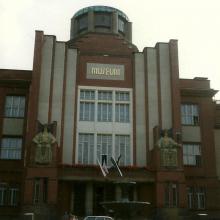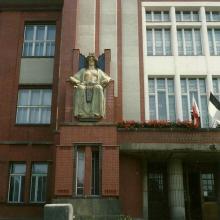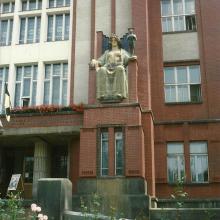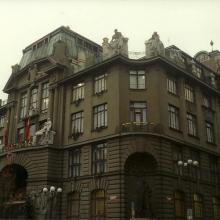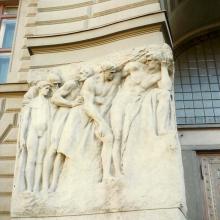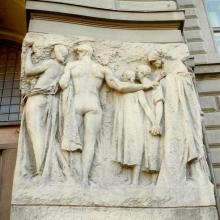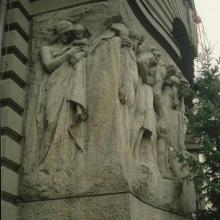The same is true of Suchard's portraits as was said of his overall artistic development. In 1892, the Reichel Prize for the Relief of the Lullaby was awarded to Suchard at the Künstlerhaus in Vienna. The portraits of the sculptor's closest family members and friends are more impressive. Especially in children's portraits, Suchard was able to capture the enchanting immediacy of his models. Especially female portraits of the last decade are characterized by a more relaxed, impressionistic handwriting and greater sketchy. Suchard later transformed a number of originally three-dimensional portraits and other monumental works into reliefs, at first rather tall and life-size. From the very beginning of his work, we come across a combination of a fully plastic concept with high and low relief. Especially the low relief then suited Suchard's fondness for drawing and his narrative tendency. He then performed larger works in various types of stone (sandstone, granite, marble) or, according to the model, it was cast in terracotta and bronze. Years of experience at the School of Applied Arts reflected on the variety of materials with which Sucharda worked and which he was able to combine in a very original way. He was probably the first Czech sculptor to realize his monumental works in glazed ceramics. Sucharda participated in the decoration of numerous representative buildings. Among the most important realizations, let us mention the decoration of both wings of Prague's main railway station (1903–04) and the New Town Hall building (1910). He collaborated with Jan Kotěra Suchard at the Prostějov National House (1906) and the Hradec Králové Museum (1910).
